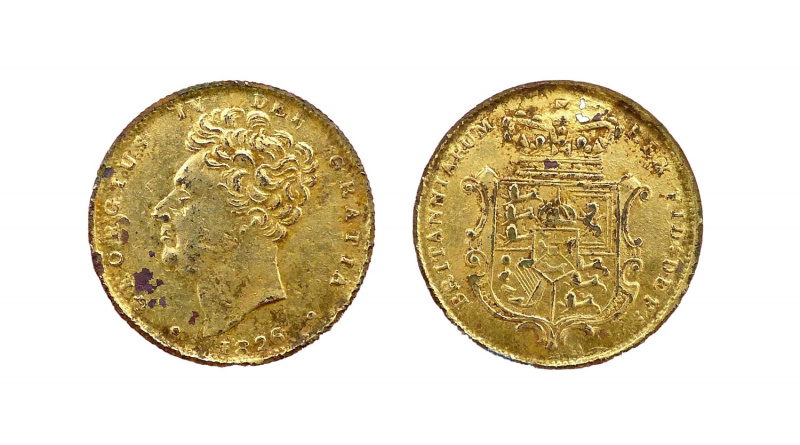Forgery of a George IV gold sovereign
When this coin surfaced it could have made the finder’s heart flutter, for at first sight it looks like a George IV gold sovereign. However, after taking a closer look it is obviously a gilded forgery with a base metal core.
Peter Vernon sent in the images but it was found by Jackie, a detecting colleague. Peter thought this find would be of minimal monetary value but it is nonetheless interesting. He wondered how fakes like this were made, by the ‘lost wax’ process or some other method.
The period in English history when forgery was most prevalent seems to be the second and third decades of the 19th century. Experienced detectorists will have dug up several base metal fakes of George III coins and a few of George IV. The majority were made in Birmingham, which was by far the leading manufacturer of buttons. Dies were needed for fancy buttons and some of the craftsmen that made them had a side-line in coin dies. Many of the forgeries produced during the 1810s and 20s were very close copies of the genuine article. Most are silver plated base metal and only a few copied gold coins – the reason being that it was easier to pass silver than gold, for the latter would be carefully scrutinised.
Valuation
Peter is correct in thinking Jackie’s find would be of minimal monetary value. However, it is much rarer than a fake shilling or halfcrown and the story behind it is more interesting than it would be if it was a perfectly genuine George IV gold sovereign.
Valuation Service
If you would like your coin identified or valued, please read about my valuation service and contact me

